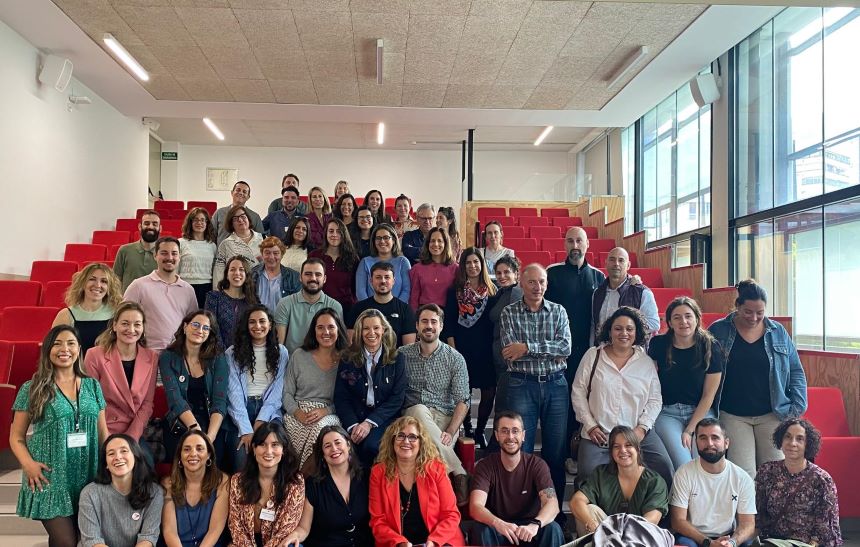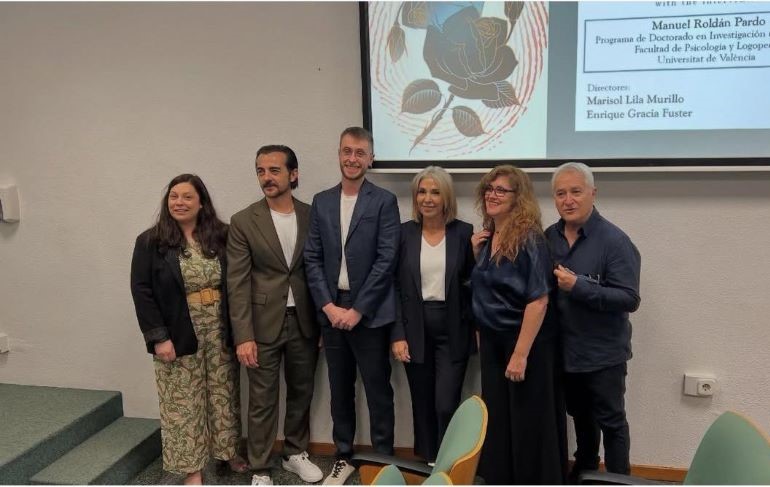Violence in intimate relationships such us intimate partner violence or child maltreatment are social problems whose undertanding needs to go beyond individual and relational factors, to also take into account the social context in which they occur (e.g., neighborhoods). VIO-STRATEGY analyzes neighborhood characteristics and processes, and their relevance in explaining several social problems. The influence of neighborhoods on the risk of intimate partner violence, child maltreatment, and other social problems (e.g., social disorder, criminality, suicide) is analyzed with advanced statistical methods such as spatial and spatio-temporal Bayesian models.
Neighborhoods, violence and other social problems
- Gracia, E., López-Quílez, A., Marco, M., Escobar-Hernández, P., & Lila, M. (2026). Neighborhood disadvantages and social cohesion as contextual determinants of inequalities in intimate partner violence risk across city neighborhoods. Cities, 168, 106506. https://doi.org/10.1016/j.cities.2025.106506
- Gracia, E., López-Quílez, A., Marco, M., Escobar-Hernández, P., & Lila, M. (2025). Neighborhoods can be sexist too: Hostile sexism and risk of intimate partner violence across city neighborhoods. Social Science & Medicine, 380, 118241. https://doi.org/10.1016/j.socscimed.2025.118241
- Marco, M., Escobar-Hernández, P., Sánchez-Sáez, F., López-Quílez, A., Montagud-Andrés, M., Lila, M., & Gracia, E. (2025) Temporal trends in suicide related emergency calls by age group and gender from 2014 to 2023. Scientific Reports, 15(1), 25737. https://doi.org/10.1038/s41598-025-07700-4
- Marco, M., López-Quílez, A., Sánchez-Sáez, F., Escobar-Hernández, P., Montagud-Andrés, M., Lila, M., & Gracia, E. (2024). The spatio-temporal distribution of suicide-related emergency calls in a European city: Age and gender patterns, and neighborhood influences. Psychosocial Intervention, 33(2) 103-115. https://doi.org/10.5093/pi2024a8
- Montagud-Andrés, M., Marco, M., López-Quílez, A., Escobar-Hernández, P., Lila, M., & Gracia, E. (2024). The spatial overlap between risk of intimate partner violence against women and suicide-related emergency calls. European Journal of Public Health, 35(1), 60-64. https://doi.org/10.1093/eurpub/ckae166
- Marco, M., López-Quílez, A., Gracia, E., & Maguire-Jack, K. (2022). The spatio-temporal epidemiology of child maltreatment: Using Bayesian hierarchical models to assess neighborhood influences. In K. Maguire-Jack, & C. Katz (Eds.), Neighborhoods, communities and child maltreatment. Springer. https://doi.org/10.1007/978-3-030-93096-7_2
- Gracia, E. (2021). Neighborhood disorder. In F. Maggino, (Ed.) Encyclopedia of quality of life and well-being research (2nd Edition) (pp. 1-6). Springer. https://doi.org/10.1007/978-3-319-69909-7_2751-2
- Gracia, E., Marco, M., López-Quílez, A., & Lila, M. (2021). Chronic high risk of intimate partner violence against women in disadvantaged neighborhoods: An eight-year space-time analysis. Preventive Medicine, 148, 106550. https://doi.org/10.1016/j.ypmed.2021.106550
- Marco, M., Gracia, E., López-Quílez, A., & Lila, M. (2021). The spatial overlap of police calls reporting street-level and behind-closed-doors crime: A Bayesian modeling approach. International Journal of Environmental Research and Public Health, 18(10), 5426. https://doi.org/10.3390/ijerph18105426
- Marco, M., Gracia, E., López-Quílez, A., & Lila, M. (2020). Vecindarios y problemas sociales: Un acercamiento desde la estadística espacial. En A. M. Martín, F. Fariña, y R. Arce (Eds.), Psicología Jurídica. Investigación para la práctica profesional (pp. 461 – 481). Sociedad Española de Psicología Jurídica y Forense: Colección Psicología y Ley. https://doi.org/10.2478/9788395609596-023
- Marco, M., Maguire-Jack, K., Gracia E., López-Quílez, A. (2020). Disadvantaged neighborhoods and the spatial overlap of substantiated and unsubstantiated child maltreatment referrals. Child Abuse & Neglect, 104, 104477. https://doi.org/10.1016/j.chiabu.2020.104477
- Marco, M., Gracia, E., López-Quílez, A., & Freisthler, B. (2019). Child maltreatment and alcohol outlets in Spain: Does the country drinking culture matters? Child Abuse & Neglect, 91, 23-30. https://doi.org/10.1016/j.chiabu.2019.02.010
- Gracia, E., López-Quílez, A., Marco, M., & Lila, M. (2018). Neighborhood characteristics and violence behind closed doors: The spatial overlap of child maltreatment and intimate partner violence. PLoS ONE, 13(6), e0198684. https://doi.org/10.1371/journal.pone.0198684
- Gracia, E., Marco, M., López-Quílez, A., Lila, M. (2018). Análisis y prevención del delito a partir de los patrones espacio-temporales de las llamadas a la Policía Local. El caso de la ciudad de Valencia. Editorial Iustel.
- Marco, M., Gracia, E., López-Quílez, A. y Lila, M. (2018). What calls for service tell us about suicide: A 7-year spatio-temporal analysis of neighborhood correlates of suicide-related calls. Scientific Reports, 8, 6746. https://doi.org/10.1038/s41598-018-25268-0
- Marco, M., Lila, M., Gracia, E. y López-Quílez, A. (2018). Problemas de convivencia relacionados con el alcohol. Un análisis espacio-temporal en la ciudad de Valencia. En P. Lloria (Dir.), Convivencia ciudadana: mediación, conciliación y técnicas de prevención y resolución del conflicto ciudadano. (pp. 333-349). Editorial Iustel.
- Marco, M.; Gracia, E.; López-Quílez, A. (2018). The university campus environment as a protective factor for intimate partner violence against women: An exploratory study. Journal of Community Psychology, 46(7), 903-916. https://doi.org/10.1002/jcop.21980
- Gracia, E., López-Quílez, A., Marco, M., & Lila, M. (2017). Mapping child maltreatment risk: A 12-year spatio-temporal analysis of neighborhood influences. International Journal of Health Geographics, 16, 38. https://doi.org/10.1186/s12942-017-0111-y
- Marco, M., Freisthler, B., Gracia, E., López-Quílez, A., Lila, M. (2017). Neighborhood characteristics, alcohol outlet density, and alcohol-related calls-for-service: A spatiotemporal analysis in a wet drinking country. International Journal of Geo-Information, 6(12), 380. https://doi.org/10.3390/ijgi6120380
- Marco, M., Gracia, E. y López-Quílez, A. (2017). Linking neighborhood characteristics and drug-related police interventions: A Bayesian spatial analysis. International Journal of Geo-Information, 6(3), 65. https://doi.org/10.3390/ijgi6030065
- Marco, M., Gracia, E., Martín-Fernández, M., & López-Quílez, A. (2017). Validation of a Google Street View-based neighborhood disorder observational scale. Journal of Urban Health, 94, 190-198. https://doi.org/10.1007/s11524-017-0134-5
- Marco, M., López-Quílez, A., Conesa, D., Gracia, E., & Lila, M. (2017). Spatio-temporal analysis of suicide-related emergency calls. International Journal of Environmental Research and Public Health, 14(7), 735. https://doi.org/10.3390/ijerph14070735
- Gracia, E., López-Quílez, A., Marco, M., Lladosa, S., y Lila, M. (2015). The spatial epidemiology of intimate partner violence: Do neighborhoods matter? American Journal of Epidemiology, 182(1), 58-66. https://doi.org/10.1093/aje/kwv016
- Marco, M., Gracia, E., Tomás, J. M., & López-Quílez, A. (2015). Assessing neighborhood disorder: Validation of a three-factor observational scale. The European Journal of Psychology Applied to Legal Context, 7(2), 81-89. https://doi.org/10.1016/j.ejpal.2015.05.001
- Gracia, E., López-Quílez, A., Marco, M., Lila, M., Lladosa, S., & Serrano, J. (2014). Epidemiología espacial de la violencia de género y características de los barrios: Un estudio piloto en la ciudad de Valencia. Ministerio de Sanidad, Servicios Sociales e Igualdad, Gobierno de España. https://www.inmujeres.gob.es/publicacioneselectronicas/documentacion/Documentos/DE1552.pdf
- Gracia, E., López-Quílez, A., Marco, M., Lladosa, S., & Lila, M. (2014). Exploring neighborhood influences on small-area variations in intimate partner violence risk: A Bayesian random-effects modeling approach. International Journal of Environmental Research and Public Health, 11(1), 866-882. https://doi.org/10.3390/ijerph110100866
- Gracia, E., Fuentes, M. C., Garcia, F., & Lila, M. (2012). Perceived neighborhood violence, parenting styles, and developmental outcomes among Spanish adolescents. Journal of Community Psychology, 40(8), 1004-1021. https://doi.org/10.1002/jcop.21512
- Gracia, E., Herrero, J., Lila, M., & Fuente, A. (2009). Perceived neighborhood social disorder and attitudes toward domestic violence against women among Latin-American immigrants. European Journal of Psychology Applied to Legal Context, 1(1), 25-43. https://www.researchgate.net/publication/28314694
- Gracia, E., & Herrero, J. (2007). Perceived neighborhood social disorder and attitudes toward reporting domestic violence against women. Journal of Interpersonal Violence, 22(6), 737-752. https://doi.org/10.1177/0886260507300755
- Gracia, E., & Herrero, J. (2006). Perceived neighborhood social disorder and residents’ attitudes toward reporting child physical abuse. Child Abuse & Neglect, 30(4), 357-365. https://doi.org/10.1016/j.chiabu.2005.11.001
- Herrero, J., & Gracia, E. (2005). Perceived frequency of domestic violence against women and neighbourhood social disorder. Psychological Reports, 97(3), 712-716. https://doi.org/10.2466/pr0.97.3.712-716
- Gracia, E., & Musitu, G. (2003). Social isolation from communities and child maltreatment: A cross-cultural comparison. Child Abuse & Neglect, 27(2), 153-168. https://doi.org/10.1016/S0145-2134(02)00538-0
- Gracia, E., García, F., & Musitu, G. (1995). Macrosocial determinants of social integration: Social class and area effect. Journal of Community & Applied Social Psychology, 5(2), 105-119. https://doi.org/10.1002/casp.2450050204











